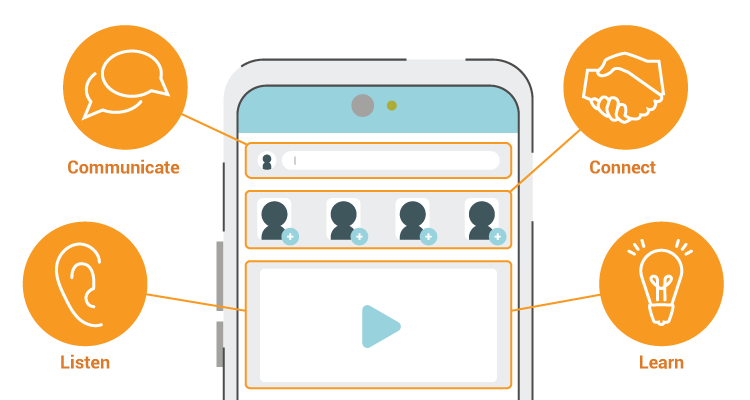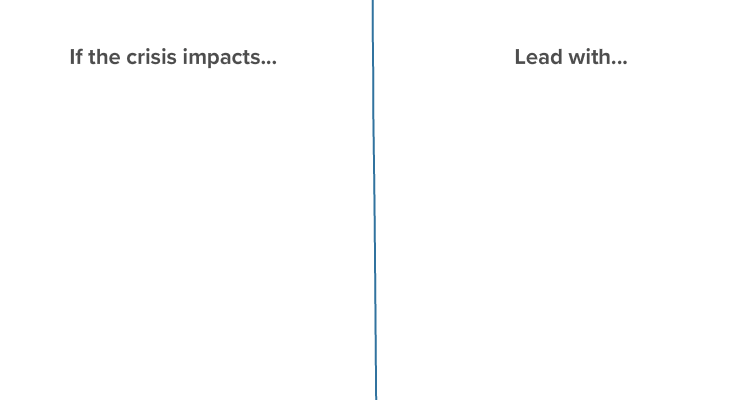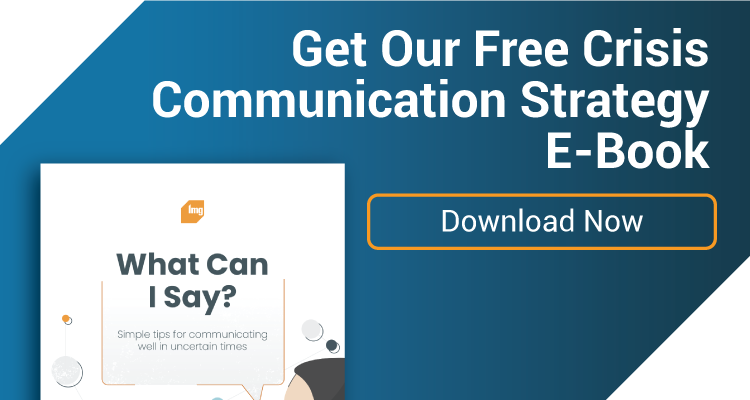When a crisis strikes, sometimes it's hard to know when and how to respond. One of the best ways to meet your customers and community where they are is through social media, and it can be an effective tool if used properly.
Now, you might be wondering, “How can I use social media for crisis management and communication?” or, “What steps should I take to best manage a crisis on social media?”
You can use social media to listen, learn, connect, and communicate during times of crisis.

Follow these seven steps below to help build stronger relationships with your followers and customers through challenging times.
- Create a social media crisis communication plan.
Managing your communication strategy during a crisis takes thoughtful planning. That’s why it’s best to create a plan ahead of time so you can easily refer to general guidelines, roles, and processes should the need arise in the future. If you haven’t created one yet, start now!
“If you fail to plan, you are planning to fail.” —Benjamin Franklin
The following steps will walk you through the most essential things to keep in mind as you outline your plan for engaging on social media during a crisis, and the end result should serve as an initial framework or strategy.
- Categorize the crisis.
The crisis type will determine how best to approach managing it. Categorize your crisis by considering whether it impacts your company, your community, or both.

If the crisis impacts your company… lead with honesty, ownership, and a plan.
If the crisis impacts your community… lead with empathy, solidarity, and sincerity.
If the crisis impacts your company and your community… match both approaches as best you can.
- Pause previously scheduled posts.
During a crisis, audience sensitivities are heightened and “business as usual” usually takes a backseat to the matters at hand. Pause all scheduled posts and paid ads, especially those planned without the context of the current crisis, until further notice. Communicating a message that is perceived by your online community as insensitive and out of touch in a time of crisis can likely have a lasting negative impact on your company’s image.
- Use social listening tools.
One of the most important things companies can do when dealing with a crisis is listening. Listen to what your community is saying about the current crisis to learn what’s most important to them at the moment. Then, align your plan for engagement to best address those things. Also monitor mentions of your company so you can be sure you’re consistently planning, acting, and communicating with the clearest context possible. Here are a few tools that can help:
- Twitter search streams: Use this to track trending keywords and hashtags related to your company and the current crisis. Popular social media management tools like Hootsuite, HubSpot, Sprout Social, and Buffer have built in social listening tools, especially for Twitter.
- Facebook Pages to Watch Tool: This is one of Facebook’s best-kept secrets for businesses. Use this tool to track the social media activity of key competitors or complementary business pages, including their top-performing posts, in real time for strategic decision-making and engagement.
- Instagram hashtag following: Follow trending hashtags related to this crisis to monitor the most circulated content.
- Google Alerts: This service regularly scans the internet for any match to your specified keyword terms and emails the results to you.
- Collaborate to craft your message.
As you begin writing your content, ask for feedback from key leadership and those individuals in your company who are closest to your customers, like your sales team. They can provide valuable insight on customer needs and expectations to help you create a message that will resonate. Then, collaborate with your strategy, content, and design teams to create consistent, on-brand communications based on the team’s input and expertise. Also be sure to include the right people in the review process before publishing any final content.
- Connect with your community. Curate quality content.
Companies can help effectively manage a crisis by finding ways to cultivate genuine connections with their community in times when it matters most, transparently informing their followers and intentionally joining the conversations in the comments. So, get in there and engage on your channels. Use caution and consideration, and remember what core values to lead with based on the category of the current crisis—as mentioned in Step Two. Reply to comments on your posts, tag community partners that are on that social platform, and share posts from complementary businesses. If a crisis doesn’t directly affect your company, but does impact your community, sharing helpful resources created by relevant organizations in the community can help.
- Monitor your channels.
Keep an eye on your content, comments, and inboxes on all platforms where you are active. Be as transparent and responsive as possible, keep your team in the loop, and adjust your strategy as needed while you navigate the crisis. In the event that you experience negative comments or complaints via your social media channels, check out these tips to help you address them.
Remember, communication is key in times of crisis. And while it can be stressful, these keys can help you proceed with confidence and scale crises successfully. You got this!
Connect with us on Facebook, Instagram, Linkedin, and Twitter to stay up to date on marketing insights and best practices!
Helpful resources:
When Words Fail: Communication Strategy in Troubled Times
How to Use Social Media for Crisis Communications and Emergency Management
Build Your Social Media Crisis Management Plan in 10 Steps
5 Tips for Managing a Social Media Crisis


